Featured Articles
Enigmatic, Polarizing Broner Should Stop Malignaggi

I don’t like Adrien Broner, the person. I have no quarrel with brash, loud-mouthed, uber-confident guys who can back it up in the ring (see: I have no ill will towards Floyd Mayweather, Jr.). However, everything about Broner is annoying. His “hair brushing” gimmick? His ill-timed, poorly-delivered jokes and misconceived sense of humor? It’s all a hopeless charade in trying to emulate the aforementioned Mayweather. Broner just doesn’t get “it”.
While Floyd can be rightly criticized for not fighting the best available opponents over the last decade, his in-ring skills and out-of-the ring popularity are unquestionable. He’s the best in the business when considering the combination of fame, recognition, and skill.
While Twitter is not the ultimate measure of a man’s popularity, it’s certainly a good reference point. Floyd has over 4 million followers, but Broner has just 96,000. To be fair, Floyd has been at the top of the sport for a long time, and this is not an apples-apples comparison, but when you hear Broner referred to as “the future of boxing” or “the next big thing”, you would expect a bigger fan following. And as someone who openly doesn’t care for Broner, I am still accounted for as one of the 96,000.
What Adrien Broner does have is the single best weapon in all of boxing: His straight right hand. It’s a God-given missile, and it will carry him to great heights as a prizefighter. Make no mistake, Broner is neither flawless nor unbeatable. When he tries to imitate Floyd’s patented shoulder-roll defense, he gets tagged repeatedly for it. Fortunately for his handlers, he can take a punch just fine. His defensive liabilities will absolutely cost him as he continues stepping up in competition. In the meantime, Broner has the great equalizer in his right hand. It’s his trump card, and it’s his bailout. It’s truly amazing how he can generate such power without cocking back, loading up, etc. It’s like a supercharged jab, shot out like a pistol.
Broner constantly draws comparisons to Floyd Mayweather, Jr., and some of the reasons are obvious. The pre-fight antics, the trash talk, and the lightning-fast hand speed in the ring are clear similarities. The most identifiable similarity in their respective fighting styles is their quick right hands. However, there are some clear differences between the two fighters:
Difference 1: The good news for Broner.
Floyd, for years, has won fights with his straight right alone. While inflicting minimal damage, it lands at will, keeps opponents off balance/out of sync, and racks up points. Earlier in Floyd’s career, he would land explosive combinations and land several meaningful punches while his opponent tried to land one. Now, as an aging fighter, Floyd uses his straight right as both a lead and a counter, and it’s nearly indefensible due to his accuracy, timing, and innate ability to know precisely when to throw it.
This is where the difference in their right hand lies. At 135 lbs, Broner’s straight right is “Nyquil”. It puts people to sleep (well aware that was a tacky reference) with concussive force, and at the very least snaps opponent’s heads back enough to make them think twice about engaging in exchanges. It’s as quick and fast as Floyd’s right hand with a lot more power. And he’s a finisher.
Difference 2: The bad news for Broner.
Adrien Broner doesn’t know how to use his feet (either that, or he is simply lazy/undisciplined). He’s extremely athletic, but he does not really outbox many opponents using his legs/movement. Floyd is the best I’ve ever seen in that regard. He can box circles around people, or lay on the ropes if he’s lazy because he’s that good. He’s never on the ropes because he was forced there. His cerebral approach to boxing makes sure the fight takes place exactly where he wants it to. No matter where the fight goes, Floyd doesn’t take much punishment. Sure, Floyd took shots from Cotto and had his nose bloodied, but he’s 36 and probably losing the world-class reflexes. Broner, who is in his athletic prime on the other hand, gets tagged by some limited offensive fighters since he stands right in front of them. Part of this problem, which can absolutely be corrected, is arrogance. Broner doesn’t think anyone he’s fought can hurt him. So far, he’s been correct. As he moves up in weight, that will undoubtedly change. His defensive complacency will be what separates him from being on top of the sport.
Directly related to lacking proper foot movement, Broner also doesn’t have a good sense of flow between offense and defense like Mayweather. Broner can counter well, but only because his hand speed is typically far superior to his opposition. Conversely, Mayweather lands counters at will because he instinctively transitions between defense and offense fluidly, slipping punches and firing back with his own. Broner simply waits until his opponent is done throwing, and then throws his own punches. It’s the reason Daniel Ponce De Leon was able to stifle Broner’s attack (in spurts) by implementing an awkward, varied fight pace to keep the youngster guessing.
Difference 3: The Moneymaker
While people often watch Floyd fight because they want to see him lose, it’s nothing compared to what Broner makes people feel. I watched his knockout of Gavin Rees with my girlfriend, who admittedly is not a boxing fan. As he made his entrance – er, train wreck—to the ring, she was so disgusted that all she wanted was “for that guy to smash his face in.” While it seems like an irrelevant point to the novice fan, that’s not the case. There’s plenty of outstanding boxers right now, and plenty of entertaining ones. But there’s VERY few that have mass appeal. Floyd, for better or worse, has that mass appeal. Broner is genuinely disliked, and that’s a really big deal.
There’s a reason Gennady Golovkin can’t land a Sergio Martinez fight, but Julio Cesar Chavez, Jr. did. It’s the same reason Andre Ward isn’t known by the masses (despite being the best prizefighter on the planet by my estimation). You have to be popular, and you have to appeal to the casual fan/non-fan to sell fights. If a fighter is not marketed well (and in Floyd’s case he largely marketed himself well), they will never reach the pinnacle of the sport. If anything has been made clear over the years, it’s that boxing is a business first and foremost, and if you can’t draw big $$, you can’t draw the exposure/fights needed to become a superstar. I just don’t see Broner doing enough in the ring to overcome his behavior until he matures. Adrien Broner simply cannot carry a network/PPV franchise at this point. What he has working for him is that he’s a pretty exciting fighter to watch (due to his knack for the finish, and suspect defense) and time is on his side.
As far as Broner’s behavior, I know it’s a charade. I do. I also know he’s a kid in a young adult’s body, but that doesn’t excuse his complete lack of class. I hope he has a long, successful career, but I hope he learns some lessons that only can be learned out of the ring.
In the meantime, he’ll be stepping up in weight (two classes to welterweight) to challenge Paulie Malignaggi on Saturday, a move signaling his desire to get involved with the biggest $$ fights in the most competitive division in boxing (and also lay the foundation for a potential “passing of the torch” fight vs. Mayweather in a few years).The biggest question when guys move up in weight is how they’ll deal with bigger power/punchers, but Malignaggi poses no real threat with his power. What Malignaggi brings to the table is heart, determination, slick boxing knowhow, and experience.
(Revisit his loss to Miguel Cotto here where he battled through extreme punishment and adversity to make it a close fight against an elite fighter)
{youtube}uSty5VCZy5o{/youtube}
The only ways for Paulie to win this fight are:
1)Literally box circles around Broner. Broner tends to get a bit flat-footed in the center of the ring, so if Paulie can stick a few quick shots and circle away from the retuning punches from Broner, he could frustrate Broner into getting wild. To do this for 12 rounds, he’ll need to mix it up by circling both right and also left into Broner’s dangerous right hand.
2)Make this a Bernard Hopkins-style fight. Paulie will need to get dirty in this one. He needs to get off first, then hold, headbutt, and just generally muddy this fight up. Fighting on an even playing field puts him at a disadvantage since Broner is faster, younger, and has more pop. Let’s not forget that Ricky Hatton and Amir Khan both outboxed and really dominated Paulie, so he needs to dig into his whole bag of tricks to keep his belt.
3)Land a hard, stiff jab all night long. If Paulie uses his jab as a range-finder, it will be counter-productive and lead to a short night of work for Broner. Conversely, if Paulie can use his jab as an effective punch to keep Broner off balance, he can dictate the pace of the fight and at least partially offset Broner’s power.
4)Land a haymaker and knock the over-confident Broner out. Yeah, you’re right, not going to happen.
At the end of the day, Paulie Malignaggi from 2008 gives Broner fits and probably ekes out a close decision. However, he’s really slowed down the last year or two (I mean, Pablo Cesar Cano gave him a real struggle), and I just don’t see him beating Broner. Broner should win this with a TKO in round 9 when Malignaggi’s corner stops the violence. Make no mistake, I’m rooting hard for Paulie. I just don’t see it ending well for him.
Assuming he’s victorious, what would a win over a slightly faded Malignaggi prove about Broner? Not much. My biggest question on Broner is how he responds to adversity, when he really gets tagged on the chin. Paulie Malignaggi is a very skilled, slick boxer, but he’d never be confused with a chin-checker. Here’s the fights I’m hoping to see in Broner’s immediate future as we see what type of fighter he really is:
Vs. Matthysse- This has absolute fireworks written all over it. I mean a war. Matthyse is one of those guys you can’t just take shots from. Broner is susceptible to eating clean shots, and he wouldn’t get away with that against the Argentine. I would take Matthysse by KO early.
Vs. Brandon Rios- While Rios doesn’t have the power of Matthysse, he has the style to give Broner hell. I would take Broner via a late TKO, but I sure wouldn’t bet on it.
Vs. Canelo- Canelo may just be too large to ever fight Broner, but as two of the brightest young stars in boxing, they may be on a collision course if Golden Boy has anything to say about it. Canelo would overwhelm Broner with power punches, forcing a late stoppage.
Vs. Marquez- This is something of a dream fight for me… I see a grueling battle, with Marquez losing a very close decision. But this would be a wild encounter with multiple knockdowns for both fighters.
Vs. Amir Khan- What Amir Khan lacks in ability to take a punch, he largely makes up for it with some of the best offense in the sport today. He would undoubtedly connect with some serious punches on Broner. However, if Broner can withstand the shots, like Danny Garcia did, he’d likely turn Khan’s lights out like Garcia did, too.
Vs. Robert Guerrero- Before the Mayweather fight, I would have said that Robert bullies him to a UD. After seeing how easily Floyd shut him down with right hands, I see the same outcome against Broner. Wouldn’t be surprised if this was actually the next fight for Broner after he dispatches Malignaggi.
Featured Articles
Hiruta, Bohachuk, and Trinidad Win at the Commerce Casino

A jam-packed fight card featuring a world champion, top contenders and knockout artists delivered the action but no knockouts on Saturday in the Los Angeles area.
You can’t have everything.
Mizuki “Mimi” Hiruta (8-0, 2 KOs), fresh with a multi-year 360 Boxing Promotion’s contract deal, once again fought and defended the WBO super fly world title and this time against Argentina’s Carla Merino (16-3, 5 KOs) at Commerce Casino.
It was expected to be her toughest test.
Hiruta, who is trained and managed by Manny Robles, showed added poise and a sharp jab that created and established an invisible barrier that Merino could never crack. It was as simple as that.
A sharp right jab from the southpaw Japanese world champion in the opening round gave Merino something to figure out. When the Argentine fighter tried to counter Hiruta was out of range. That distance was a problem that Merino could not solve.
The pink-flame-haired Hiruta looks like an anime figure incapable of violence. But whenever Merino dared unload a combination Hiruta would eagerly pounce on the opportunity. It was clear that the champion’s speed and power was a problem.
For more than a year Hiruta has been training in Southern California and has sparred with numerous styles and situations in the talent-crazy Southern California area. Each time she fights the poise and polish gained from working with a variety of talent and skill partners seems to add more layers to the Japanese fighter’s arsenal.
After six rounds of clear control by Hiruta, the Argentine fighter finally made an assertive move to change the momentum with combination punching. Both exchanged but Hiruta cornered Merino and opened up with a seven-punch barrage.
In the eighth round Merino tried again to force an exchange and again Hiruta opened up with a three-punch combo followed by a four-punch combo. Merino dived inside the attack by the Japanese champion and accidentally butted Hiruta’s head. No serious damage appeared.
Merino tried valiantly to exchange with Hiruta but the strength, speed and agility were too much to overcome in the last two rounds of the fight. Left hand blows by the champion connected solidly several times in the final round.
After 10 rounds all three judges saw Hiruta the winner by decision 98-92 twice and 99-91. The fighter from Tokyo retains the WBO super fly title for the fourth time.
Bohachuk Wins
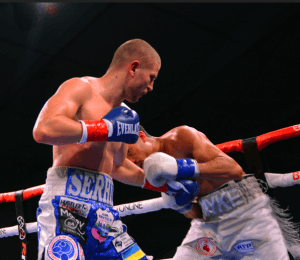
Ukraine’s Serhii Bohachuk (26-2, 24 KOs) defeated Mykal Fox (24-5, 5 KOs) by unanimous decision but had problems corralling the much taller fighter after 10 rounds in a super welterweight match.
It was only the second time Bohachuk won by decision.
Fox used movement all 10 rounds that never allowed Bohachuk to plant his feet to deliver his vaunted power. But though Fox had moments, they were not enough to offset the power shots that did land. Two judges scored it 97-93 for the Ukrainian and another had it 98-92
“Good experience for me,” said Bohachuk of Fox’s movement.
King of LA
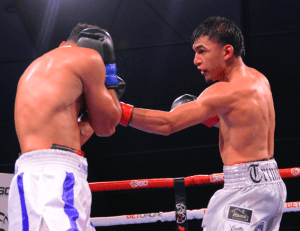
In a super featherweight match Omar “King of LA” Trinidad (19-0-1, 13 KOs) dominated Nicaragua’s Alexander Espinoza (23-7-3, 8 KOs) but never came close to knocking out the spirited fighter. But did come close to dropping him.
The fighter out of the Boyle Heights area in the boxing hotbed of East L.A. was able to exchange freely with savage uppercuts to the body and head, but Espinoza would not quit. For 10 rounds Trinidad battered away at Espinoza but a knockout win was not possible.
After 10 rounds all three judges favored Trinidad (100-90, 99-91, 98-92) who retains his regional WBC title and his place in the featherweight rankings.
“I’m living the dream,” said Trinidad.
Maywood Fighter Medina on Target
Lupe Medina (10-0, 2 KOs) proved ready for the elite in knocking down world title challenger Maria Santizo (12-6, 6 KOs) and winning by unanimous decision after eight rounds in a minimumweight match up.
Medina, a model-looking fighter out of Maywood, Calif, accepted a match against Santizo who had fought three times against world titlists including L.A. great Seniesa Estrada. She looked perfectly in her element.
Behind a ramrod jab and solid defense, Medina avoided the big swinging Santizo’s punches while countering accurately. For every home run swing by the Guatemalan fighter Medina would connect with a sharp right or left.
In the fifth round, Santizo opened up with a crisp three-punch combination and Medina opened up with her own four-punch blast that seemed to wobble the veteran fighter. Medina stepped on the gas and fired strategic blows but never left herself open for counters.
Medina didn’t waste time in the sixth round. A crisp one-two staggered Santizo who reeled backward. The referee ruled it a knockdown and Santizo was in trouble. Medina went into attack mode as Santizo pulled every trick she knew to keep from being overrun by the Maywood fighter.
In the last two rounds Medina seemed to look for the perfect shot to end the fight. Santizo kept busy with short shots and stayed away from meaningful exchanges. Medina also might have been gassed from expending so many punches in the prior round.
The two female fighters both seemed to want a knockout in the eighth round. Santizo was wary of Medina’s power and dived in close to smother Medina’s firing zone. Neither woman was able to connect with any significant shots.
After eight rounds all three judges scored in favor of Medina 77-74, 76-75 and 80-71.
It was proof Medina belongs among the top minimumweight fighters.
Other Bouts
In a super welterweight fight Michael Meyers (7-2) defeated Eduardo Diaz (9-4) by unanimous decision in a tough scrap. Mayers proved to be more accurate and was able to withstand a late rally by Diaz.
Abel Mejia (8-0) defeated Antonio Dunton El (6-4-2) by decision after six rounds in a super feather match.
Jocelyn Camarillo (4-0) won by split decision after four rounds versus Qianyue Zhao (0-2) in a light flyweight bout.
Photos credit: Al Applerose
To comment on this story in the Fight Forum CLICK HERE
Featured Articles
David Allen Bursts Johnny Fisher’s Bubble at the Copper Box

The first meeting between Johnny Fisher, the Romford Bull, and David Allen, the White Rhino, was an inelegant affair that produced an unpopular decision. Allen put Fisher on the canvas in the fifth frame and dominated the second half of the fight, but two of the judges thought that Fisher nicked it, allowing the “Bull” to keep his undefeated record. That match was staged last December in Riyadh, Saudi Arabia, underneath Usyk-Fury II.
The 26-year-old Fisher, who has a fervent following, was chalked a 13/5 favorite for the sequel today at London’s Copper Box Arena. At the weigh-in, Allen, who carried 265 pounds, looked as if he had been training at the neighborhood pub.
Through the first four rounds, Fisher fought cautiously, holding tight to his game plan. He worked his jab effectively and it appeared as if the match would go the full “10” with the Romford man winning a comfortable decision. However, in the waning moments of round five, he was a goner, left splattered on the canvas.
This was Fisher’s second trip to the mat. With 30 seconds remaining in the fifth, Allen put him on the deck with a clubbing right hand. Fisher got up swaying on unsteady legs, but referee Marcus McDonnell let the match continue. The coup-de-gras was a crunching left hook.
Fisher, who was 13-0 with 11 KOs heading in, went down face first with his arms extended. The towel flew in from his corner, but that was superfluous. He was out before he hit the canvas.
A high-class journeyman, the 33-year-old David Allen improved to 24-7-2 with his 16th knockout. He promised fireworks – “going toe-to-toe, that’s just the way I’m wired” – and delivered the goods.
Other Bouts of Note
Northampton middleweight Kieron Conway added the BBBofC strap to his existing Commonwealth belt with a fourth-round stoppage of Welsh southpaw Gerome Warburton. It was the third win inside the distance in his last four outings for Conway who improved to 23-3-1 (7 KOs).
Conway trapped Warburton (15-2-2) in a corner, hurt him with a body punch, and followed up with a barrage that forced the referee to intervene as Warburton’s corner tossed in the white flag of surrender. The official time was 1:26 of round four. Warburton’s previous fight was a 6-rounder vs. an opponent who was 8-72-4.
In the penultimate fight on the card, George Liddard, the so-called “Billericay Bomber,” earned a date with Kieron Conway by dismantling Bristol’s Aaron Sutton who was on the canvas three times before his corner pulled him out in the final minute of the fifth frame.
The 22-year-old Liddard (12-0, 7 KOs) was a consensus 12/1 favorite over Sutton who brought a 19-1 record but against tepid opposition. His last three opponents were a combined 16-50-5 at the time that he fought them.
Also
In a bout that wasn’t part of the ESPN slate, Johnny Fisher stablemate John Hedges, a tall cruiserweight, won a comprehensive 10-round decision over Liverpool’s Nathan Quarless. The scores were 99-92, 98-92, and 97-93.
Purportedly 40-4 as an amateur, Hedges advanced his pro ledger to 11-0 (3). It was the second loss in 15 starts for the feather-fisted Quarless, a nephew of 1980s heavyweight gatekeeper Noel Quarless.
Photo credit: Mark Robinson / Matchroom
To comment on this story in the Fight Forum CLICK HERE
Featured Articles
Avila Perspective, Chap. 326: A Hectic Boxing Week in L.A.

The Los Angeles area is packed with boxing.
Japan’s Mizuki “Mimi” Hiruta, Ukraine’s Serhii Bohachuk, and the indefatigable Jake Paul are all in the Los Angeles area this week.
First, Hiruta (7-0, 2 KOs) defends the WBO super flyweight title against Argentina’s Carla Merino on Saturday May 17, at Commerce Casino. The 360 Boxing Promotions card will be streamed on UFC Fight Pass.
Voted Japan’s best female fighter, Hiruta faces a stiff challenge from Merino who traveled thousands of miles from Cordoba.
360 Promotions is one of the top promotions especially when it comes to presenting female prizefighting. Two of their other female fighters, Lupe Medina and Jocelyn Camarillo, will also be fighting on Saturday.
They are not only promoting female fighters. They have several top male champions including Bohachuk and Omar “Trinidad performing this Saturday.
Don’t miss this show at Commerce Casino.
“This card is one of the deepest cards we’ve promoted in Southern California which has been proven by the rush for tickets and the wealth of media interest. Serhii, Omar and Mizuki are three of the top fighters in their respective weight classes and it’s a great opportunity for fans to see a full night of action,” said Tom Loeffler of 360 Promotions.
Jake and Chavez Jr. in L.A.
Jake Paul took time off from training in Puerto Rico to visit Los Angeles to hype his upcoming fight against former world champion Julio Cesar Chavez Jr. next month.
“The fans have wanted to see this, and I want to continue to elevate and raise the level of my opponents,” said Paul, 28. “This is a former world champion, and he has an amazing resume following in his dad’s footsteps.”
Paul, who co-owns Most Valuable Promotions with Nakisa Bidarian, last staged a wildly successful boxing card that included Amanda Serrano versus Katie Taylor and of course his own fight with Mike Tyson.
It set records for viewing according to Netflix with an estimated 108 million views.
Paul (11-1, 7 KOs) is set to face Chavez (54-6-1, 34 KOs) in a cruiserweight battle at the Honda Center in Anaheim, Calif. on June 28. DAZN pay-per-view will stream the Golden Boy Promotions and MVP fight card that includes the return of Holly Holm to the boxing world after years in MMA.
No one should underestimate Paul who does have crackling power in his fists. He is for real and at 28, is in the prime of his boxing career.
Yes, he is a social influencer who got into boxing with no amateur background, but since he engaged fully into the sport, Paul has shown remarkable improvement in all areas.
Is he perfect? Of course not.
But power is the one attribute that can neutralize any faults and Paul does have real power. I witnessed it when I first saw him in the prize ring in Los Angeles many years ago.
Chavez, 39, the son of Mexico’s great Julio Cesar Chavez, is not as good as his father but was talented enough to win a world title and hold it until 2012 when he was edged by Sergio Martinez.
The son of Chavez last fought this past July when he defeated former UFC fighter Uriah Hall in a boxing match held in Florida. He has been seeking a match with Paul for years and finally he got it.
“I need to prepare 100%. This is an interesting fight. It might not be easy, but I’m going to do the best I can to be the best person I am, but I think I’m going to take him,” said Chavez.
Paul was not shy about Chavez’s talent.
“This is his toughest fight to date, and I’m going to embarrass him and make him quit like he always does,” said Paul about Chavez Jr. “I’m going to expose and embarrass him. He’s the embarrassment of Mexico. Mexico doesn’t even claim him, and he’s going to get exposed on June 28.”
Also on the same fight card is unified cruiserweight champion Gilberto “Zurdo” Ramirez (47-1, 30 KOs) who defends the WBA and WBO titles against Yuniel Dorticos (27-2, 25 KOs).
In a surprising addition, former boxing champion Holm returns to the boxing ring after 12 years away from the sport. Can she still fight?
Holm (33-2-3, 9 KOs) meets Mexico’s Yolanda Vega (10-0, 1 KO) in a lightweight fight scheduled for 10 rounds. Holm is 43 and Vega is 29. Many eyes will be looking to see the return of Holm who was recently voted into the International Boxing Hall of Fame.
Wild Card Honored by L.A. City
A formal presentation by the Los Angeles City Council to honor the 30th anniversary of the Wild Card Boxing Club takes place on Sunday May 18, at 1:30 p.m. The ceremony takes place in front of the Wild Card located at 1123 Vine Street, Hollywood 90038.
Along with city councilmembers will be a number of the top first responder officials.
Championing Mental Health
A star-studded broadcast team comprised of Al Bernstein, Corey Erdman and Lupe Contreras will announce the boxing event called “Championing Mental Health” card on Thursday May 22, at the Avalon Theater. DAZN will stream the Bash Boxing card live.
Among those fighting are Vic Pasillas, Jessie Mandapat and Ricardo Ruvalcaba.
For more information including tickets go to www.555media.com/tickets.
Fights to Watch
Sat. UFC Fight Pass 7 p.m. Mizuki Hiruta (7-0) vs Carla Merina (16-2).
Thurs. DAZN 7 p.m. Vic Pasillas (17-1) vs Carlos Jackson (20-2).
Mimi Hiruta / Tom Loeffler photo credit: Al Applerose
-
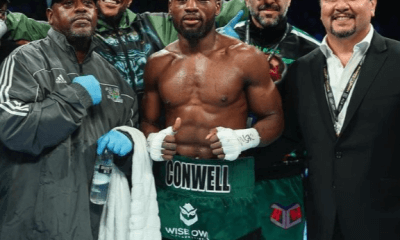
 Featured Articles4 weeks ago
Featured Articles4 weeks agoAvila Perspective, Chap. 322: Super Welterweight Week in SoCal
-
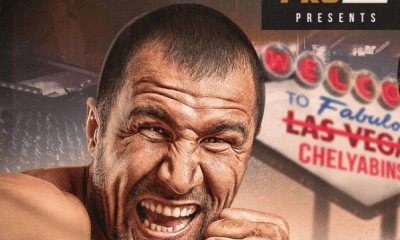
 Featured Articles4 weeks ago
Featured Articles4 weeks ago‘Krusher’ Kovalev Exits on a Winning Note: TKOs Artur Mann in his ‘Farewell Fight’
-
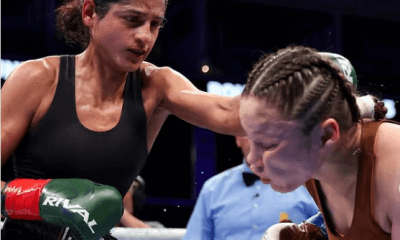
 Featured Articles4 weeks ago
Featured Articles4 weeks agoGabriela Fundora KOs Marilyn Badillo and Perez Upsets Conwell in Oceanside
-

 Featured Articles4 weeks ago
Featured Articles4 weeks agoFloyd Mayweather has Another Phenom and his name is Curmel Moton
-
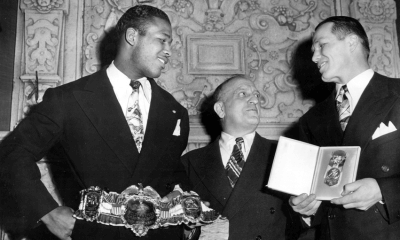
 Featured Articles4 weeks ago
Featured Articles4 weeks agoArne’s Almanac: The First Boxing Writers Assoc. of America Dinner Was Quite the Shindig
-
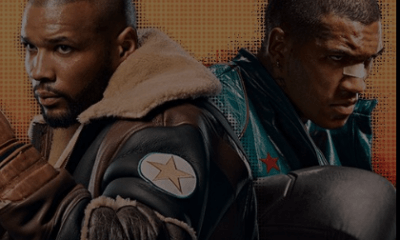
 Featured Articles3 weeks ago
Featured Articles3 weeks agoAvila Perspective, Chap. 323: Benn vs Eubank Family Feud and More
-
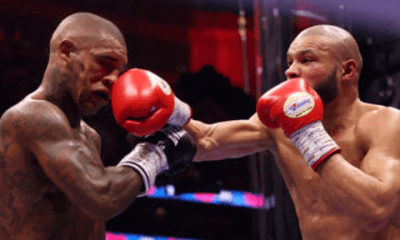
 Featured Articles3 weeks ago
Featured Articles3 weeks agoChris Eubank Jr Outlasts Conor Benn at Tottenham Hotspur Stadium
-
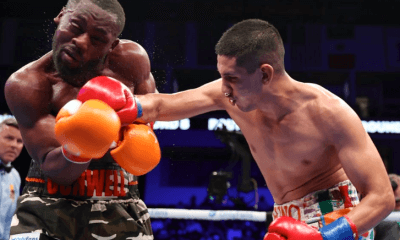
 Featured Articles3 weeks ago
Featured Articles3 weeks agoJorge Garcia is the TSS Fighter of the Month for April

















